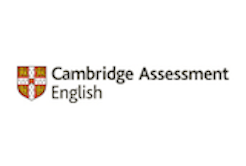According to Mark Twain “Writing is easy. All you have to do is cross out the wrong words”. However, this is not a common thought among teenagers, who generally believe that writing is something complex. This way of thinking means we can be met with bored faces whenever students are asked to write in class. What are the reasons behind it? How can we help turn those expressions into smiles?
To begin with, in comparison to other skills, writing is more time consuming, as its process starts not when one holds a pen and is ready to write, but when we start thinking about ideas. Usually, writing tasks are at the end of the didactic units. These writing tasks are used as a way to consolidate the objectives that have been previously set. However, there are other ways of working with writing throughout the unit. As a matter of fact, this will help pupils to feel more confident when facing the real writing task at the end.
Based on my own experience, I’m going to give you 5 tips to help you teach writing more efficiently. And why not, make it fun!
1.Show the importannce of working with drafts
Editing is an important part in the process of writing. The best way to avoid mistakes and master this skill is to create drafts and work on them. As teachers, we can check the progress that the student is gradually making. In addition, it offers complete understanding when they look back upon it. Thus, pupils reflect on their own mistakes, making the learning more valuable.
Teaching tip: Don’t let students start from scratch. Provide them with a model for them to analyse. Help them in the process of creating a draft. Little by little they will be more autonomous.
2. Use writing prompts
The purpose of using this technique is to encourage students to write in a thoughtful and creative way. Prompts are usually questions or topics that can be developed in a small paragraph. As a result, it is easy to introduce this writing task in almost every lesson. Prompts are effective as they allow you to use specific grammatical structures and vocabulary items.
Teaching tip: The prompt could be anything (a question, a statement, a narrative passage or even a picture). Teachers should choose wide ranging topics so students who struggle with this skill feel confident and motivated to write. For example: “Today is Family Day. I would like you to describe a memorable event you have had with any relative.”
3.Keep a life-saving writing checklist
More often than not, students hand in pieces of writing that stray from the point, or use incorrect register or format. In order to help them and make them aware that texts should be clear, organised and revised and that they must answer a question and follow certain conventions, checklists can be of great help. It is important to mention that it helps students understand the key elements of a particular type of writing that should be included.
Teaching tip: As a warm-up activity, you can start brainstorming with your students “What are the 5 things that we shouldn’t forget to check when writing an email?” At cambridge.org, there are a wide range of lessons based on working with checklists:
B2 First for Schools writing checklist lesson
Checklist to improve your writing: C1 Advanced
Checklist to improve your writing: C2 Proficiency
4. Empower the group
From my personal experience as a teacher, writing tasks were always individually assigned. With the passing of time, I have realised that sharing ideas was more fruitful and, as a result, I decided to include peer work when working on writing. But, how about the results? First of all, it fosters a relationship of trust and partnership among the group. Secondly, I could see improvement in their tasks in terms of better organisation and language. Last but not least, as they know they are not working on their own, students are eager to participate.
Teaching tip: Before organising the teams it is better to know more about the group in terms of weaknesses and strengths. In my classroom I started noticing that when I’d say get into groups, pupils immediately go towards the same peers. So what other ways can we group students? No matter what, students might moan! So be ready for a few complaints at the beginning. Groups can be formed taking into account learning styles or interests. They can also be heterogenous or homogenous based on their academic achievements. They can also be formed randomly using a digital spin wheel! It’s entirely up to you
5. Prepare for longer pieces
Longer pieces can be daunting, so work up to them. These are some examples of what your students might be asked to write throughout an English course: stories about things that happened or made-up stories, a review of a book or a TV programme, an email to a friend, etc. It is important to bear in mind the following aspects:
Teach: explain the features of the type of writing and the importance of expanding sentences little by little. Good writing consists of a mixture of both long and short sentences. Short sentences tend to be direct and are a useful way to emphasise clever ideas. However, it is longer sentences where students can give vivid descriptions and what’s more, in stories, they could be used to develop this tension to a point of culmination. Provide them enough scaffolding to do it.
Model: analyse models in terms of layout, vocabulary, grammatical structures etc. Layout features include the use of capital letters, the division of the paragraph, the organisation. As far as vocabulary and grammar are concerned, it’s useful to make students reflect upon spelling mistakes and encourage them to upgrade their lexicon. Finally, the grammatical structure of a sentence helps convey precise meaning to the reader, but how? By means of the effective use of punctuation, capitalisation and spelling.
Practise: this is one of the most important steps. They might not get it the first time, but practice will help them to master it.
Apply: as teachers we can think about real situations in which students have to write. Grammar and vocabulary are best taught in the context of student writing. In other words, it is more effective when students learn through writing!
The value of experience!
Eight years ago when my career as a teacher had just begun, I happened to think that I was fully prepared to face a classroom and that all the theory and pedagogical approaches I had closely studied for years would save my first years as a teacher. They did somehow, but despite that great foundation, I found out that there were so many things that can only be learned through experience. These 5 tips are the result of finding ways to motivate students to perform better in writing and of course, the result of trying out new things that I haven’t learnt from books, but from my own experience.











